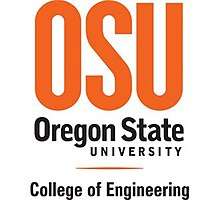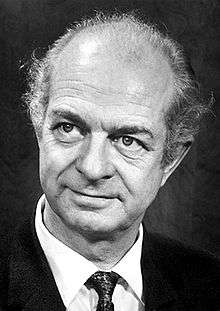Oregon State University College of Engineering
Oregon State University's College of Engineering is a college within Oregon State University.

It is organized into five schools[1]:
- Mechanical, Industrial, and Manufacturing Engineering
- Civil and Construction Engineering
- Electrical Engineering and Computer Science Department
- Chemical, Biological, and Environmental Engineering
- Nuclear Science and Engineering
Additional degree-granting programs exist in the disciplines of Ecological Engineering and Water Resources Engineering. The two newest buildings are Kelley Engineering Center, home to the school of electrical engineering and computer science, and a remodeled Kearney Hall, home to civil and construction management engineering.
History
The College of Engineering has graduated 27,000 engineers since its founding in 1889.
It attempts to use innovative Platforms for Learning including TekBots to enhance hands-on teaching and develop work-ready graduates who are driven to build a better world.
Size
As of the Fall term of 2013, there were 5682 undergraduate and 1076 graduate students enrolled in the College of Engineering for the Corvallis campus. This totals at 6758.[2]
The College of Engineering's faculty is made up of approximately 200 members whose time is split between teaching and research.[3]
The College's Operational budget for the 2013–2014 school year was $81.4 million with $34 million from research grants and $16.2 million from private donors.[3]
Notable alumni
- Linus Pauling, 1954 Nobel Prize in Chemistry & 1962 Nobel Peace Prize recipient; the only person ever to win two unshared Nobel Prizes
- Timothy S. Leatherman of Leatherman Tool Group, Inc.
- Peter Gassner, co-founder of Veeva Systems
- Jen-Hsun Huang, founder of nVIDIA Corp
- Douglas Engelbart, inventor of the computer mouse
- William Oefelein, NASA Astronaut
- Donald Pettit, NASA Astronaut
References
- "College of Engineering fact sheet 2018-19" (PDF). Oregon State University College of Engineering. Retrieved May 11, 2020.
- "OSU Enrollment Summary Fall 2013" (PDF).
- "OSU CoE Fact Sheet". Retrieved March 25, 2018.
External links
Schools and Programs
- Mechanical, Industrial, and Manufacturing Engineering Home Page
- Civil and Construction Engineering Home Page
- Electrical Engineering and Computer Science Home Page
- Chemical, Biological, and Environmental Engineering Home Page
- Nuclear Engineering Home Page
